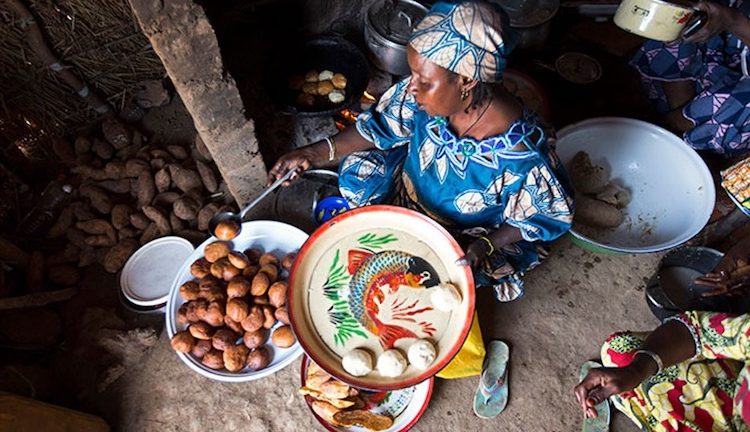By Matt Freeman*
UTRECHT, Netherlands | 2 April 2024 (IDN) — It is often assumed that women and girls disproportionately bear the brunt of global hunger and malnutrition. Analysis from Equal Measures 2030’s SDG Gender Index that tracks countries’ gender equality progress on the United Nations’ sustainable development goals now shows the true scale of the issue.
Over 1 billion girls and women today live in 38 countries with a bad to worse score on SDG 2 focused on food and nutrition in the Index. And in more than half of the countries studied since 2015, the situation is getting worse due to backsliding on key indicators like anaemia, undernourishment, women’s food insecurity and women’s perceptions of food costs.
If this trend continues, by 2030, the number of girls and women affected could nearly double.
The picture is not only bleak at a global scale but worrying at home, too. SDG 2 is one of three goals in the Index, and the situation for girls and women is worsening in the United States.
As of 2020, the US ranked just 34th in the world for women and girls’ hunger and nutrition, ranking behind countries with far lower GDPs like Czechia, Slovenia and Lithuania.
The high rates of malnutrition we see among girls and women are symptoms of the disproportionate and gendered impacts of the wider crises gripping our world. The COVID-19 pandemic was a perfect example of this. Shocks to the global economy and an increased burden of childcare led to greater job losses for women than men.
Designated as essential workers
Women were also disproportionately designated as essential workers, leading to greater rates of stress and emotional exhaustion. These impacts stretched well beyond just economic effects: lockdowns also contributed to sky-rocketing rates of gender-based violence.
Though inequalities are often stark in times of crisis, the seeds of these issues have often been sown long before many of these moments of shock and tragedy hit. A range of barriers have been built into the everyday lives of adolescent girls and women that undermine their position in society and deprive them of the resources they need to thrive, such as their access to healthy and nutritious food.
It is a particularly tragic irony that girls and women often eat last and least, even though they disproportionately grow the food and prepare it for their families. For example, recent data from Kenya showed that women spent over six times as much time as men on food and meal preparation.
These high rates of malnutrition, with the heavy burden girls and women, carry, place an unnecessary cap on the potential of adolescent girls and women worldwide, undermining progress on gender equality and trapping more than 1 billion girls and women in a vicious cycle of poor health and underachievement.
Gender inequality and malnutrition are intimately interlinked, so scaling investments from governments and other donors for women and girls are core to the solution. Well-nourished girls perform better educationally and are more likely to remain in school, decreasing their risk of getting married and having children at a young age. These are all factors that are key drivers of malnutrition.
Investing in girls and women isn’t just good for their health, but it can also be a major enabler of economic growth. The rising number of female leaders globally, both in government and business, is a testament to what can be achieved when we pay attention to what girls need from the earliest stages of their lives.
The impact of women’s participation
We know the impact of women’s participation in these forums can be profound. A McKinsey report revealed that companies in the top quartile for gender board diversity were 25% more likely to deliver above-average profitability than companies in the bottom quartile.
The ripple effects of nourishing girls and women do not end there. We also know that children born to mothers with good nutrition are more likely to live healthy and fulfilling lives themselves, meaning that investments in women’s and girls’ nutrition are an investment in the children of tomorrow.
It is estimated that simply scaling solutions like multiple micronutrient supplementation (MMS), which is the vitamin women take during pregnancy, would contribute 2.3 million years of learning to the next generation.
Though the links between gender equality and nutrition are clear, action has been relatively small and fragmented until now because of a lack of practical guidance on how to invest in this double dividend.
Because of this, funding and programming continue to flow in under-resourced silos while high rates of gender inequality and malnutrition continue unabated.
A recent report calls on the global community to bridge the divides between these sectors and make the kinds of integrated investments needed to turn this vicious cycle into a virtuous one.
Women and girls’ experiences of hunger and malnutrition are intimately intertwined with the everyday inequalities they face. We can build a stronger and more equal world through a deeper understanding of these challenges and simple, practical, yet truly transformative steps.
*Matt Freeman is the executive director of Stronger Foundations for Nutrition, which is described as the global philanthropic community for ending malnutrition. [IDN-InDepthNews]
Photo: UN Women/Ryan Brown
IDN is the flagship agency of the Non-profit International Press Syndicate


